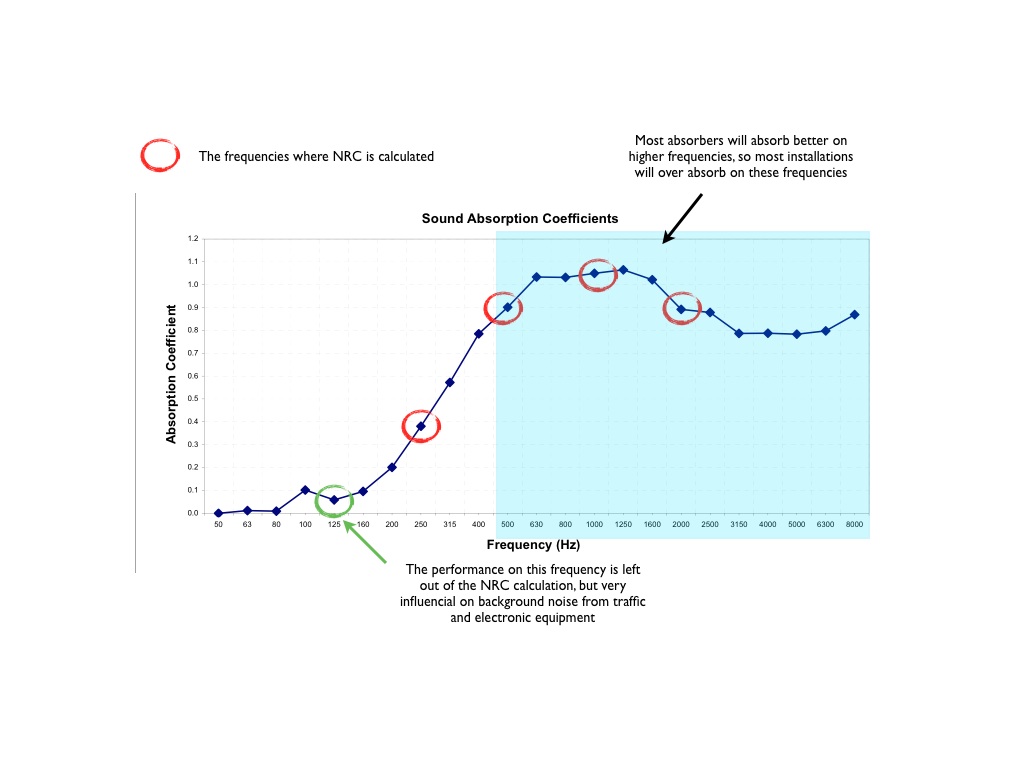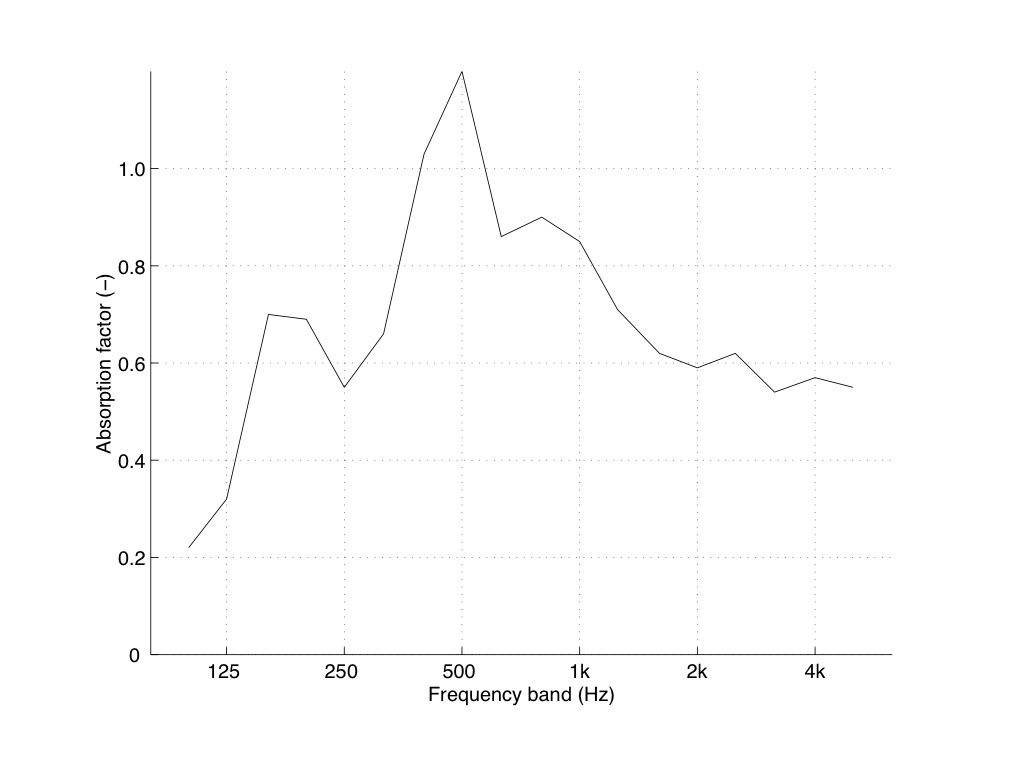NRC, weighted alpha value, sound absorption class, what does it really mean? pt 2
Acoustical ceilings are very often accompanied by mystic terms and expressions but what is really the practical use of all these expressions and how do i know how it will affect my sound environment.
In the previous post we tried to explain Sound absorption. If you missed it, catch up here.
Let’s see if we can have NRC made understandable and how to get the most out of it.
It is not unusual that the NRC value is used in architectural specifications as the only parameter to define the product to be used in terms of sound absorption.
NRC is the Noise Reduction Coefficient and that is the average of how much of the sound that hits the surface of material that is absorbed on 4 specific frequencies. These frequencies are 250 Hz, 500 Hz, 1000 Hz and 2000 Hz. The reason for choosing these particular frequencies is that they are located within the frequency range of human speech and it would be easy to assume that they should be more important to monitor compared to other frequencies of sound above or below these.
This is not entirely true. The good thing with the NRC value is that it is relatively easy to compare different products and to quickly get a rough idea of how absorbingthe product is.
The negative aspects of making things too simple are that the primary reasons for why you want to add sound absorbing products to your room is because you want it to be a better environment to be in. You want it to be quieter with less background noise, you want it to be easy to make yourself heard, even if the room should be crowded with people and you want to be able to stay there for a relatively long period of time without getting abnormally tired, dizzy or ending up with a severe head ache.
– I’m sorry to say so, but you can’t read all that out of a number which is the average of the sound absorption of 4 specific frequencies.
To just relying on the specific absorption of four single frequencies is like measuring who’s got the highest speed at 10 km, 20 km, 30 km and 40 km of a marathon, calculate the average out of those and the winner would be the runner with the highest average. If nothing else, I guess there would be a lot less people waiting at the finish line.
Although we would prefer if there always were a RASTI or STI simulation made by a professional acoustical consultant to accompany every new building, it easy to realize that there is no room for that in all cases.
But if you want to cut corners, make sure to do it together with an acoustical consultant and make sure that the specification doesn’t just describes the NRC. See to it that you will get the absorption test report as well. Don’t settle with anything but the original third party test report though as there might be vital information in the report which can be left out in a product brochure or data sheet.
Make sure to check that they are done according to the standards ASTM C423-09 and that the test specimens are mounted according to ASTM E795-05 and that there are no exceptions or remarks noted and make sure that this graph is included into the architectural specification.
Look at the graph showing the absorption on different frequencies to get this explained more into detail.
The graph above illustrates the sound absorption of a product with an NRC of 0,80 which is pretty good. But the absorption at 125 Hz is only 0,06 and the curve is rather steep from 125 Hz up to 500 Hz. If you are designing an office where you want to have enough absorption to take care of the background noise from HVAC, computers, and other electronic equipment, you need to add quite a lot of this product to achieve that. In practical terms that would mean that you need to cover, not only the ceiling but also the walls and that will be quite expensive. Moreover there is a substantial risk that the room will be over absorbed and the feeling when going in there would be that the room is “dead”.
Imagine that you decide to use this product instead
The NRC of this product is 0,75 which is less than the previous product, mainly due to its lesser absorption in the higher frequencies, but the absorption at 125 Hz is 0,32 which is more than 5 times higher than on the previous product.
This would mean that you only need 1/5 of this product to get the same absorption at 125 Hz compared to the other product. Less cost and less risk that the room will feel dead.
If you look at the last graph you will see that the curve is much more flat compared to the curve of the previous product and that is what you should aim for in most cases unless you are willing to combine different products with different characteristics and that your are able to do that in the correct way.
Next post will explain the European version of NRC, the weighted alpha coefficient and the sound classes A-E.




[…] NRC is explained in a previous post. If you want to catch up, click here […]